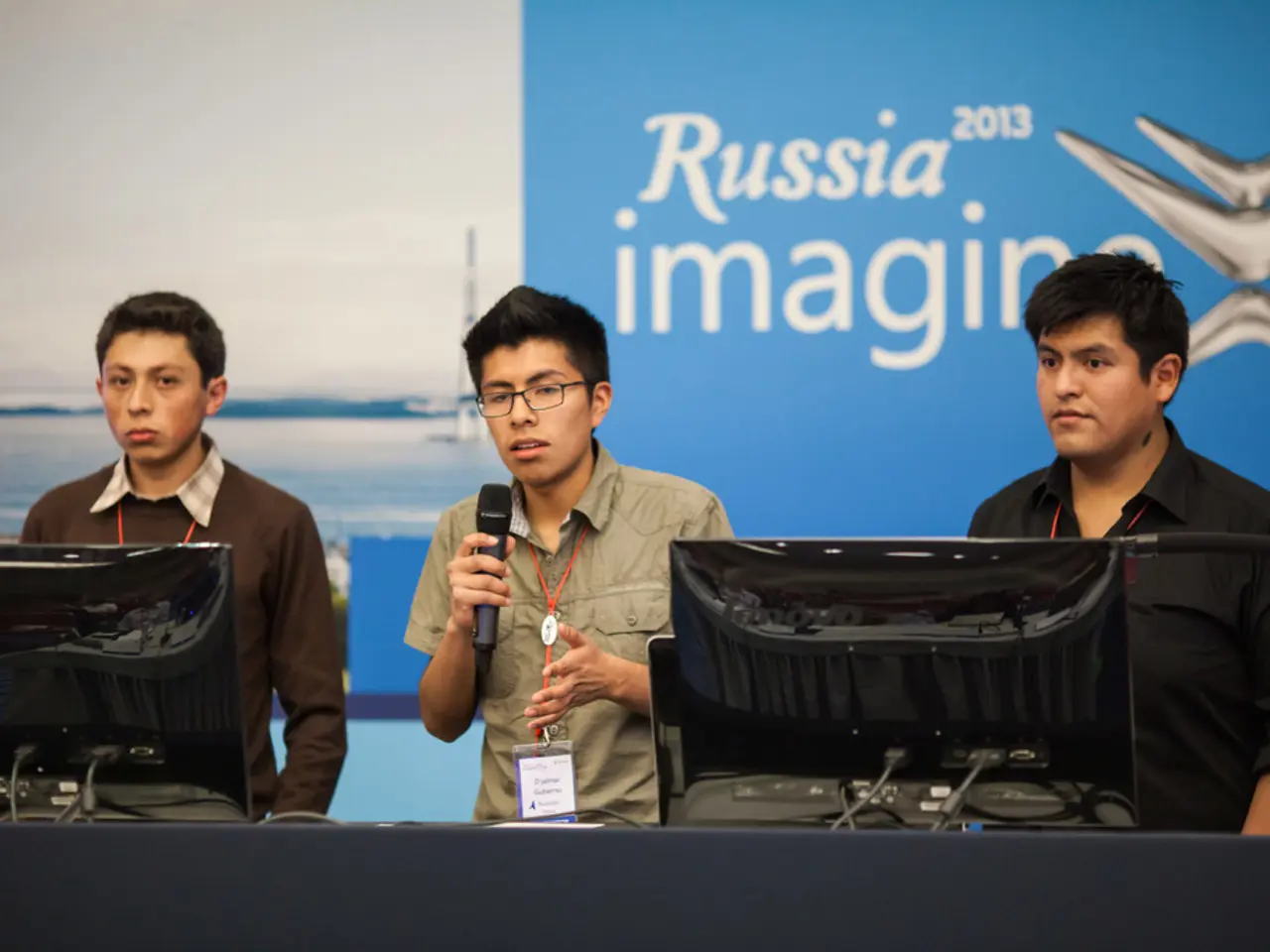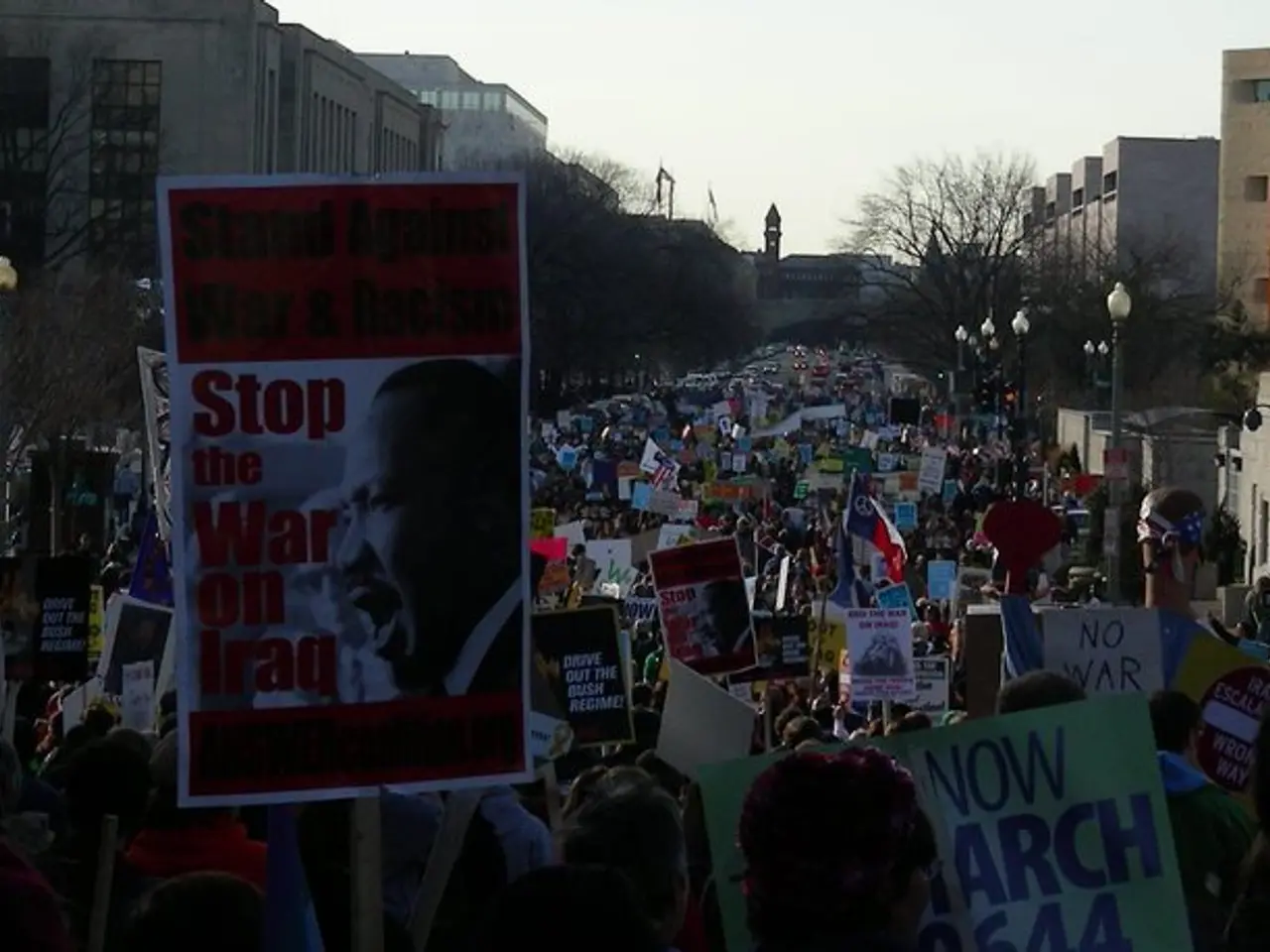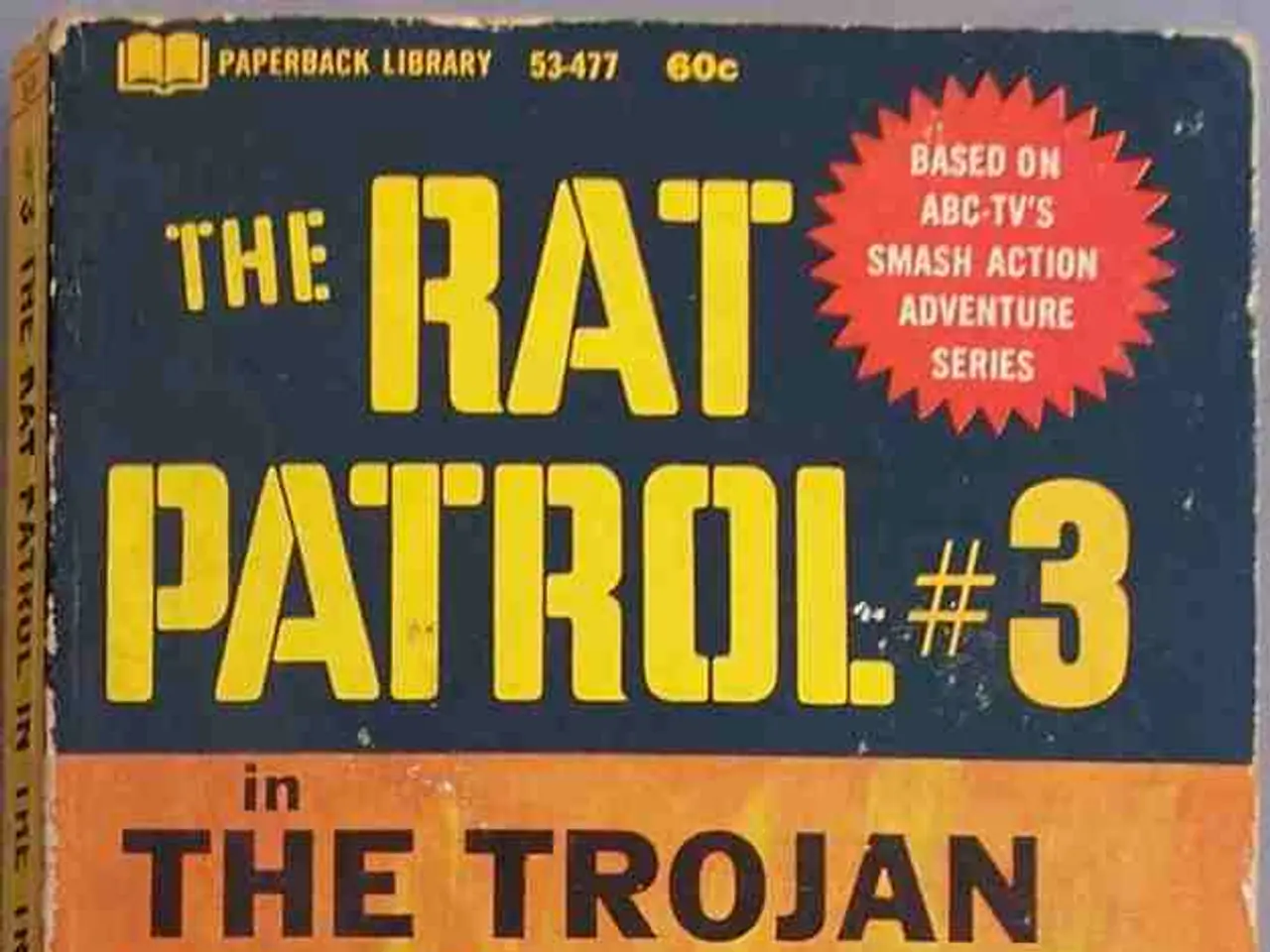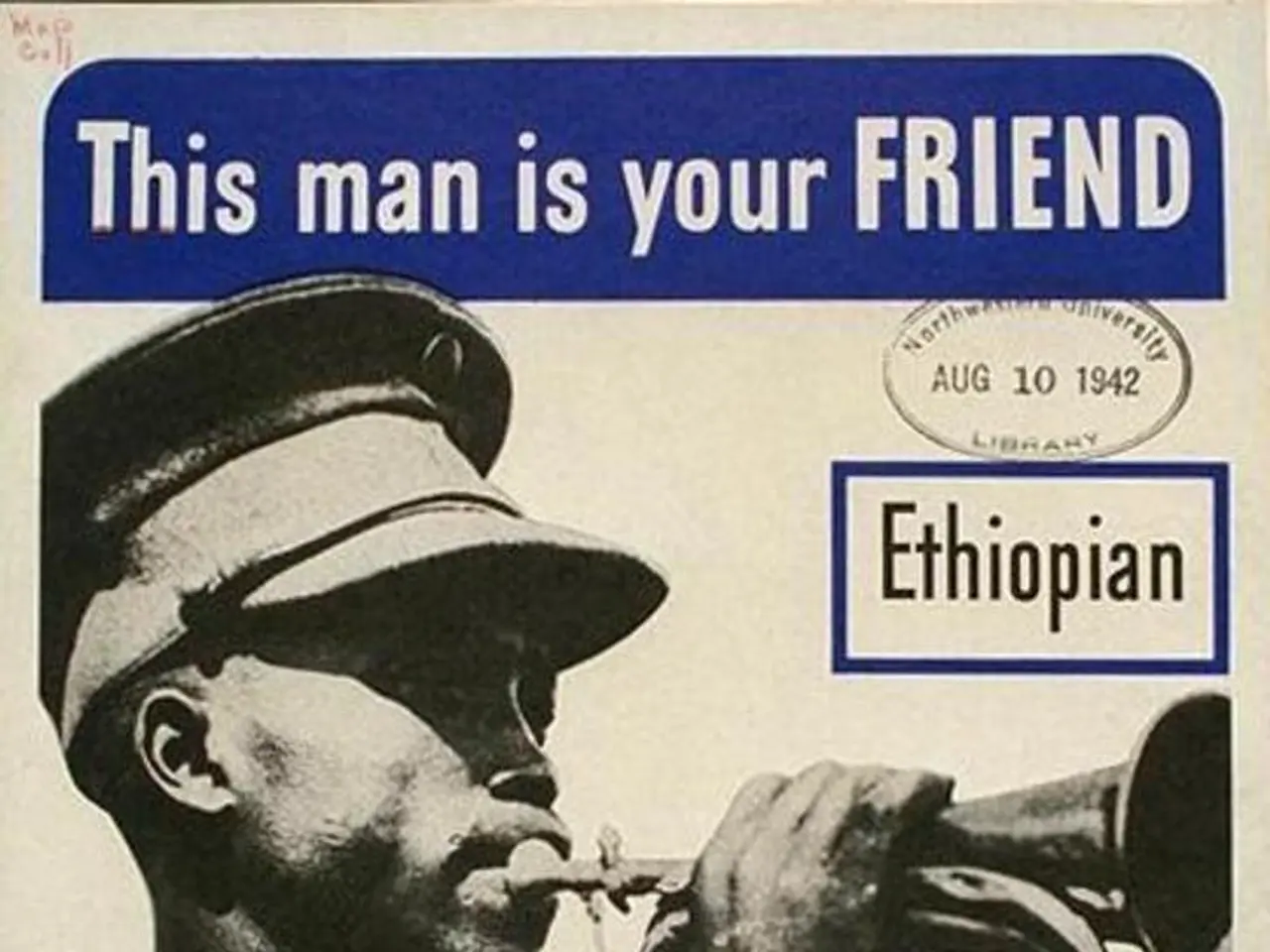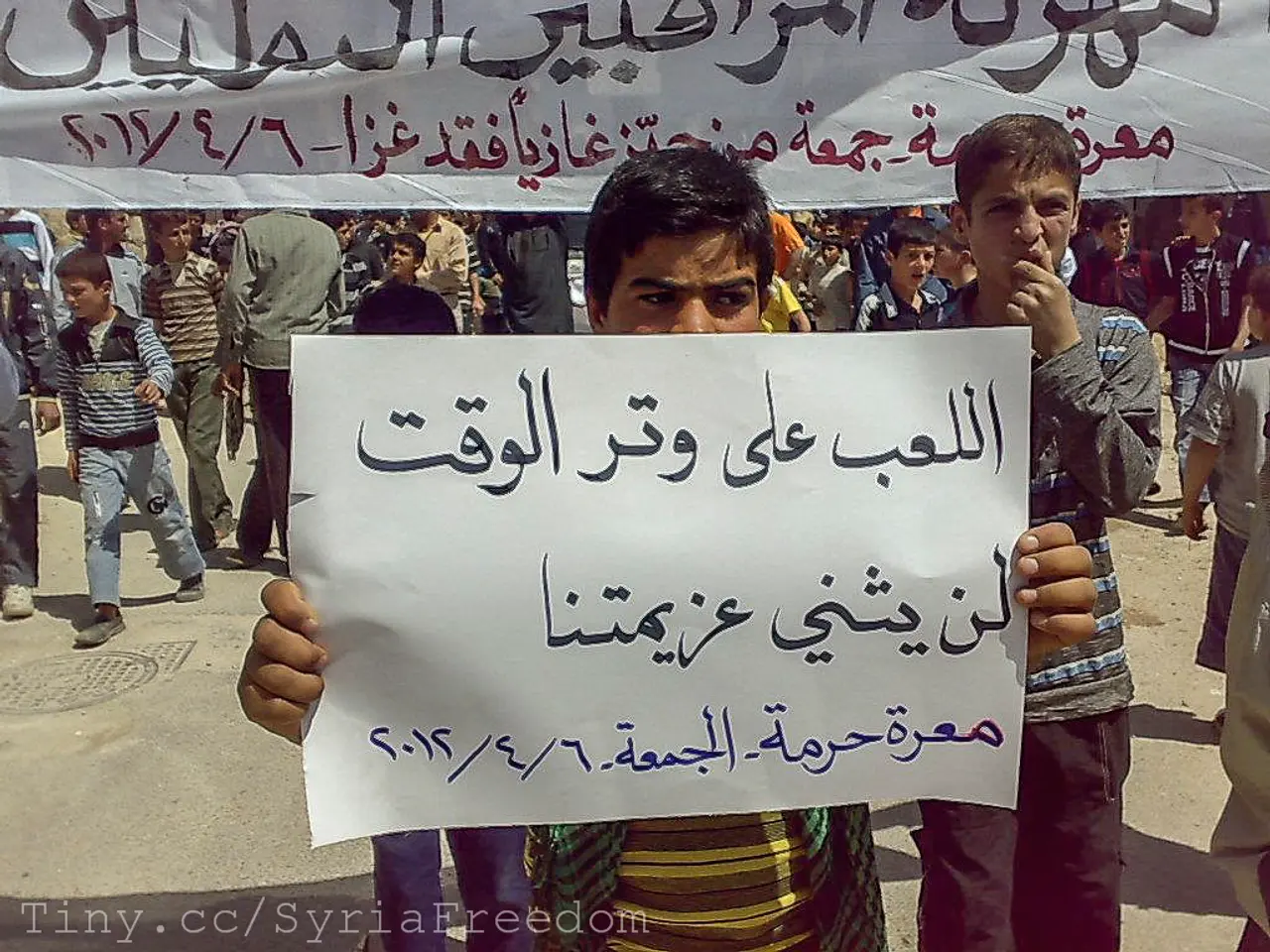Trump openly expresses perplexity, making threats towards Russia regarding the SVO issue
In a bold move, US President Donald Trump has given Russia a 10-day deadline, ending around August 8, 2025, to reach a ceasefire agreement with Ukraine. This decision comes amid stalled peace negotiations and marks a significant escalation in pressure on Moscow.
If Russia fails to comply, the US has threatened to impose secondary sanctions and tariffs on countries doing business with Russia, potentially reaching up to 100% on goods. This move is aimed at economically isolating Moscow and forcing negotiations.
The responses from the three key actors are as follows:
Russia, led by former President Dmitry Medvedev, has called the ultimatum a "step towards war." Medvedev warns that new deadlines and sanctions could escalate the conflict further rather than produce peace. Russia shows resistance to the ultimatum and views it as threatening. Trump himself has expressed uncertainty about the impact of tariffs on Russia, suggesting that Putin may want to continue the war regardless.
The US, under President Trump, has reduced its original 50-day window to 10 days due to perceived lack of progress. The administration's recent stance involves tougher economic measures, including potential secondary sanctions and weapon sales to Ukraine's allies, indicating increased readiness to pressure Russia.
Ukraine supports an immediate ceasefire and peace negotiations. Kyiv aligns with US calls for ending hostilities but faces ongoing Russian strikes, which complicate near-term peace prospects. Ukraine depends on international support, including arms supplies influenced by the US posture and sanctions regime against Russia. The impact of tariffs on Ukraine is indirect, through diplomatic and economic pressure on Russia.
This recent hardening of the US stance contrasts with an earlier accommodating approach towards Russia, marked by negotiations that involved US readiness to tolerate Russian control over some Ukrainian territories and avoidance of NATO expansion for Ukraine.
While Trump’s announcement aims to force a resolution via economic pressure, Russian officials frame it as aggression that risks widening the conflict. The effectiveness of the tariffs and sanctions depends on broader international cooperation and Russia’s willingness to sustain economic pain versus continuing the military campaign.
Russian Foreign Minister Sergei Lavrov has stated that Moscow is interested in understanding the reasons behind Donald Trump's repeated setting of different deadlines for resolving the Ukraine conflict. The European Union is influencing Washington's position on the issue, and the Russian side is prepared for new pressure measures.
Subscribers can stay informed about these events by subscribing to our website. Russian President Vladimir Putin has not yet responded to Donald Trump's threats regarding military actions. The Russian side has emphasized that their economy has already adapted to Western sanctions.
- The escalation in war-and-conflicts between Russia and Ukraine, as a result of increased political tensions, has been further aggravated by the imposition of general-news like tariffs and sanctions by the US, potentially leading to an intensification of the conflict rather than fostering peace, according to Russia's former President Dmitry Medvedev.
- Amidst the ongoing war-and-conflicts between Russia and Ukraine, the US politics has taken a tougher stance, threatening secondary sanctions and tariffs, whereas Russian foreign policy, represented by Foreign Minister Sergei Lavrov, has expressed interest in understanding the reasons behind these actions, highlighting the interplay of politics and general-news events.
